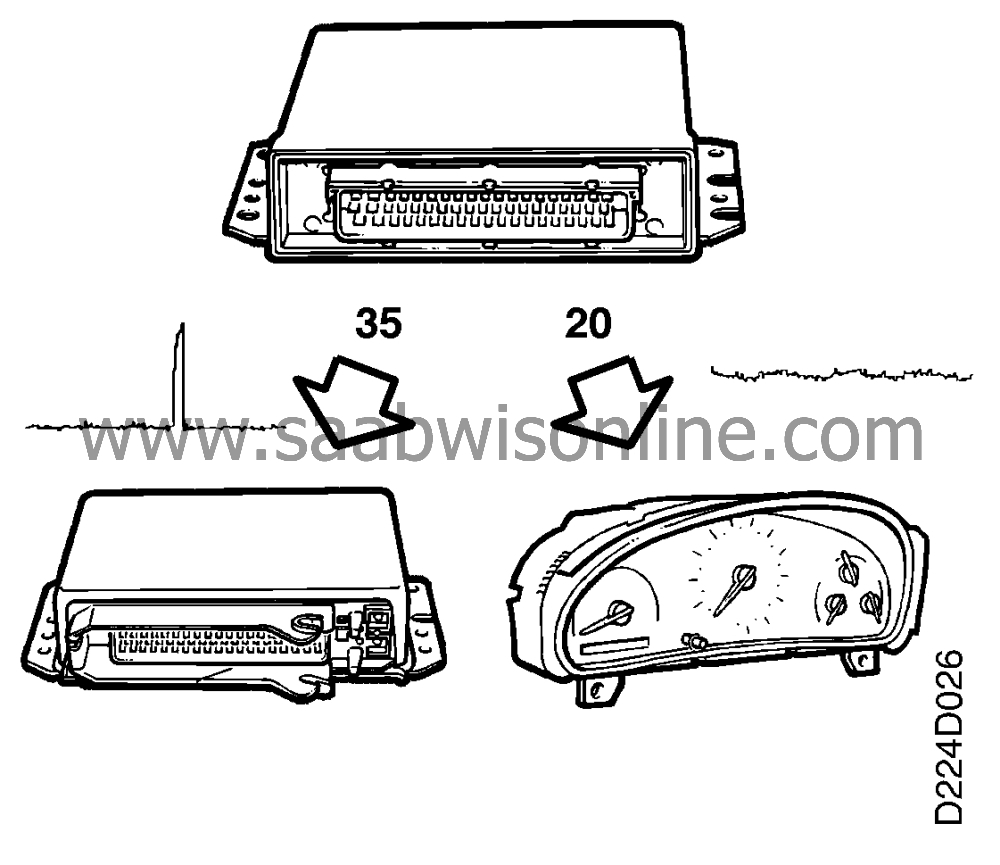Manifold absolute pressure sensor
| Manifold absolute pressure sensor |

The pressure sensor contains a pressure-sensitive ceramic sensing device, an amplifier and a circuit for temperature compensation. The pressure sensor is connected by a short special hose to the engine intake manifold after the throttle and is supplied with 5 V from ECM ground 43 and grounded from ECM pin 67.
Depending on the pressure in the intake manifold, the pressure sensor supplies a proportional voltage to ECM pin 22.
The ECM uses pressure and temperature in the intake manifold to calculate the engine load, i.e. how great an air mass each cylinder draws in. The fuel injection time is proportional to the air mass drawn in. At atmospheric pressure (100 kPa), the voltage from the pressure sensor is approx. 1.9 V. Information from the pressure sensor is also used to calculate ignition timing and for boost pressure control.
If the hose is disconnected or if the sensor does not work and in the event of an open circuit, the ECM will use the throttle position as a substitute value. The malfunction indicator lamp (CHECK ENGINE) in the main instrument comes on.
| Pressure signal |

The ECM emits a pressure signal from pin 20. The signal is a voltage which is dependent on the pressure in the intake manifold. The voltage at 100 kPa (atmospheric pressure) is approx. 1.0 V.
The pressure signal is used by the main instrument. The main instrument also uses sensor ground from pin 67 as reference ground for precise pressure measurement.
| Engine load signal |
Engine load is determined on the basis of the pressure and temperature in the intake manifold.
The ECM emits an engine load signal from pin 35. The signal is a PWM which varies in frequency. The frequency is the same as the engine speed signal, i.e. 2 pulses per crankshaft rotation. However, it is the pulse width that carries the engine load information.
During idling, the pulse width is approx. 25 µs and at 2500 rpm it is approx. 40 µs. The signal is difficult to measure during idling, even with an oscilloscope. The engine load signal is used by the Saab clutch control module and the automatic transmission control module.



